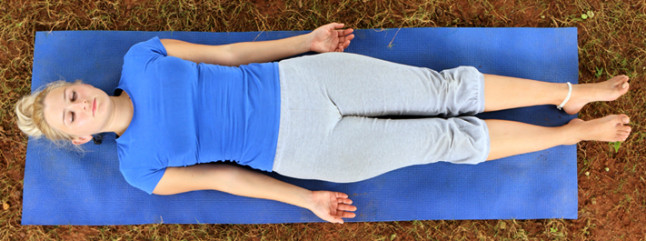Relax
With Yog Nidra
Yoga
Routine Provides Deep Restoration To Your Body And Mind. And To Make Your
Practice More Effective, It’s Ideal To End Your Yoga Sequence With Yoga Nidra.
Just
As A Car Engine Needs To Be Turned Off And Allowed To Cool Down After A Long
Drive, Similarly, After Doing Yoga Postures, We Need To Cool Our Body With Yoga
Nidra. It Helps Conserve And Consolidate The Energy From The Yoga Poses
(Active) Practices. Yoga Nidra Relaxes The Entire System, Preparing It For
Pranayama And Meditation. It Is Therefore Important To Keep Aside Sufficient
Time For Yoga Nidra After Yoga Postures.
A State Of Consciousness Between Waking And Sleeping, Like The
"Going-To-Sleep" Stage. It Is A State In Which The Body Is Completely
Relaxed, And The Practitioner Becomes Systematically And Increasingly Aware Of
The Inner World By Following A Set Of (Audio) Instructions.
Yoga
Nidra, Lucid Sleep, Is Among The Deepest Possible States Of Relaxation While
Still Maintaining Full Consciousness. In Lucid Dreaming, One Is Only (Or
Mainly) Cognizant Of The Dream Environment, And Has Little Or No Awareness Of
One's Actual Environment
The
Concept Of Yoga Nidra Is Very Ancient In Indian Traditions Such As Hinduism And
Buddhism. Krishna/Vishnu Is Often Associated With Yoga Nidra In The
Epic Mahabharata.
It is just an introduction to yog nidra. my next topic will be "Benefits of Practising Yog Nidra" if you like my research kindly leave your comment below and follow my blog. your comments are valuable and motivational tool for me.
thank you!
i thank you art of living for sharing these information related to yog nidra. it is well explained.
(all the information are copied from internet)
(if I am violating any copyright issue please let me know, I will remove the article)



